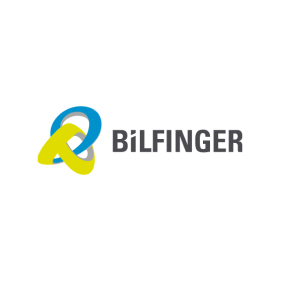
Client:Bilfinger Customer Story
Industry:Manufacturing
Region:Europe
Bilfinger Industrial Services Employs Software Robots to Drive Efficiencies across Order to Cash Processes and Increase Service Quality

More
data quality
Reduced
lead times
Minimal
errors
70%
of time saved on data input processes
Multiple
robot deployments from successful PoC project
Client Overview
Bilfinger Industrial Services Belgium/Netherlands is a leading industrial services provider within the Maintenance & Engineering Division of the multinational Bilfinger Group. With 3000 members of staff and contractors, the company offers a wide variety of services to industrial clients in the BeNe region, including insulation, scaffolding, painting, tracing, asbestos removal, fire protection, noise control, and rope access to clients in the sectors of petrochemicals, chemicals, oil and gas, pharmaceuticals, food, energy, steel and maritime.
Partner

Through the recent development of UiPath software robots, the office of Bilfinger Industrial Services in the Netherlands fulfills an important part of its long-term commitment to the digital transformation of the company's processes, not only at a client servicing level but also within its timing registration of own employees and subcontractors, and invoicing operations.
The digital transformation of processes has, for many years, been an essential part of the company’s strategy of continuous innovation and development, and in July 2020 they took the first step towards process automation. After a successful pilot project built using the UiPath RPA software platform, with the support and expertise of leading RPA implementation partner Ciphix, Bilfinger now has five robots that help drive quality and efficiencies across the company’s Order to Cash processes. Bilfinger hopes to double this number by the end of 2021.
Whether working on a mono- or multidisciplinary project, a new construction, a renovation, or a complex stop, Bilfinger Industrial Services always endeavors to meet the strictest safety and quality requirements with its working methods.
As part of this commitment to quality, Bilfinger has actively pursued a strategy of digitalization of the processes behind the services it offers. Such a digital transformation is an essential part of the company’s development and growth through innovation, and therefore, Bilfinger continuously works to optimize its processes. Important steps forward have been taken in the past five years in areas such as Operations, administration, ICT and logistics, and Bilfinger has set a series of goals to be achieved through digitalization. These goals include increasing efficiency within the organization and optimizing working processes, as well as delivering transparency and added value to its clients, all the while being at the forefront of developments within the industry and increasing its own knowledge and skills.
We were traditionally quite a conservative business. The digital transformation of the project administration began in 2016 and in the management of Order to Cash lifecycles for our clients - we worked hard to standardize and digitize processes with the intention to become a more or less paperless operation.
Arjen Janssen • Head of Project Administration, Bilfinger Industrial Services' main office in the Netherlands
The start of the digital workforce journey together
Once these processes had been successfully standardized and digitized, Arjen Janssen and his team began to look into how they could further improve them through automation, given that many of the tasks they were carrying out were highly repetitive, time-consuming, and hence vulnerable to error. Coming from a financial industry background, with a keen interest and knowledge in Lean Six Sigma and process improvements, Arjen Janssen was aware of the potential of RPA as one of the next steps forward.
In July 2020, therefore, they entered into a close business partnership with leading RPA implementation specialist Ciphix, a UiPath Diamond Partner. Headquartered in Rotterdam, Ciphix prides itself in "helping organizations unlock human potential through smarter business process automation" and leading its clients along the 'Digital Workforce Journey' through the leveraging of the best of today’s RPA and machine learning technologies.
A three stage process: start, scale, and expand.
Ciphix has a well-defined three step process to help their partners and clients successfully navigate their RPA journey—start small, scale up and then expand. Working closely with Arjen Janssen and his colleague Marian Stuij, Ciphix created a proof of concept (PoC) to demonstrate the potential of RPA to the Bilfinger management board. This PoC was built around the process of invoicing one of Bilfinger’s clients in the petrochemical industry.
Typically, with self-billing clients, the department has to enter data and contract specifications into the client system to be able to generate a supplier credit invoice or ERS. ERS—Evaluated Receipt Settlement is the process of settling goods receipt automatically. Vendor invoices are posted automatically (without receiving them from the vendor) in the system. This process can take one admin department employee up to 15 minutes per work order, when done manually.
The reason this process was chosen as the PoC was because of the highly repetitive, time-consuming activities of the Project Administration. Although Bilfinger already had the data, for example the measurements of scaffolding, digitized and readily available on their own system, the client’s system didn't allow them to create a client interface to upload that data and so the department had employees spending 5 to 6 hours a day manually entering digital data into the client's system. With the department processing an average of 150 work orders a week, automating the task therefore promised to deliver the business up to 70% savings regarding labor hours. And that was only one part of the Order to Cash process that had to be done for the client.
But it was never about just achieving time savings. Our primary focus was on quality so we needed to be able to show that we could reach our KPIs by increasing data input quality through shortening lead times and reducing error margins in the Order to Cash process using RPA.
Arjen Janssen • Head of Project Administration, Bilfinger Industrial Services
Scaling up
This first UiPath robot, built in just four weeks by the combined Bilfinger and Ciphix team and given the name Chappie, rapidly showed its worth and management were convinced of the way forward. Thus began the upscaling of the RPA deployment within the company. Driven by the Project Administration department in collaboration with IT and Innovation, the objective isn't only to scale up the automation to include more and more processes on one specific client—but to also build on and leverage already existing and repeatable robotic components to automate processes with other clients faster and more efficiently.
Ciphix and Bilfinger are now working closely in ‘sprints’ and continuously developing new RPA robots. Bilfinger keeps track of a process backlog by identifying processes suitable for RPA within their organization, and then our team organizes process deep dive sessions, which in turn allows us to design and create a robotic process solution, and then develop and deploy the robot, usually in around 4 weeks.
Marijn van de Poel • Managing Director, Ciphix
There are currently five robots running across the department. Some are dedicated to processes on one specific client, whereas others to common processes that are applicable across more customers. For example, an RPA robot was developed to manage the time registration process, calculating and making adjustments to the hours spent on a scaffolding project. Having standardized and automated the process with one client, Arjen’s team could have the virtual assistant perform the same task on the time registration data for other client projects.
The result cuts back in workloads for staff in the Project Administration Department, which not only has led to greater job satisfaction, but also has given back time to employees so they've been able to evolve professionally from merely administering projects to controlling processes and driving continuous improvements. Staff who before had time to manage just one client can now manage two or three, and with zero errors.
The software robots have been enthusiastically received by staff, with one colleague being particularly pleased and saying ‘I would like to get my own robot or virtual assistant'. They recognize that being freed from dealing with processes manually gives them time to add value to the company, and as they are responsible for the input into their robot, they can control their own processes and increase the quality, with the robot flagging up any errors that might occur.
Arjen Janssen • Head of Project Administration, Bilfinger Industrial Services
Involving staff in the automation process has been key to making sure good acceptance on their part. Marijn explains how whenever Ciphix are about to go live with a new robot, they organize a ‘user acceptance test’ with as many of the stakeholders in the process as possible. This guarantees that even the most skeptical of employees can ask questions and see for themselves the added value of the robot for the process and for their department.
“Giving each robot its own name and face, such as Max (after the Dutch F1 driver) and Billy (from ‘Billing’ and ‘Bilfinger’) helps personalize the integration process, as people can participate in choosing the name. It’s an important part of getting employees to accept the virtual assistance and to come on board,” he adds.
The future
In the third quarter of the year, to mark the first 12 months since the project began, the team will conduct what Ciphix calls an ‘X-Ray’ to identify and analyze RPA potential across the organization. This helps to create a plan of action on how the expansion phase can best be accomplished. This will involve the creation of a center of excellence in the Netherlands, primarily to allow Ciphix to train Bilfinger employees, through the UiPath Academy and their own support services, to become RPA developers themselves.
Related case studies
Ready for your own case study?
Speak to our team of knowledgeable experts and learn how you can benefit from agentic automation.





